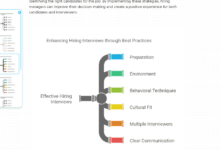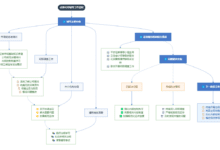Developmental editing is an editing process that analyzes how a story develops in a manuscript. Unlike copyediting, which focuses on grammar, punctuation, and style, developmental editing looks at how the story is made on a large scale. Copy editing should precede developmental editing. Developmental editing requires a change of perspective, from author to reader. The story structure needs to be looked at to ensure that each scene is relevant to the story goal. The protagonist, story goal, and stakes are the first steps in developmental editing and help prevent the story from becoming boring. In character-driven stories, internal growth and change are more important than external goals, but external story goals still help with editing structure and pacing. Summarizing the protagonist's internal growth line can help keep the learning curve on the right track during the editing process.
The following can be answered as an external knowledge guide for writing story plot fiction writing GPTs GPTs conform to the laws of story creation.
What is Content Depth Revision?
Content depth modification, often referred to asStructural editing, is when an editor or writer analyzes the overall story development in a manuscript. This is distinguished from text revision, which focuses on grammar, punctuation, and sentence-level style improvements.
Because depth-of-content revisions are concerned with the macro-architecture of the story-how the individual plots and chapters work with each other-depth-of-content edits should be made prior to text revisions.
It becomes logical to think about the story as if it were a building: don't polish the floor to shine until you're sure the roof isn't going to collapse.
Similarly, don't spend your precious time fixing sentences that might get cut.
Because, if the scenes that bloom with gorgeous prose aren't moving your story forward, it's inevitable that you might end up cutting them. As heartbreaking as that idea is.
I know, it hurts too much!You are.Writer. Creating and reinventing polished sentences overflowing with poetry and verbal artistry is a way to explore your joie de vivre. That's your mission - your specialized skill.
You can totally enjoy the word game - but only after the deep content revision is complete.
Content depth revisions are made to shape compelling stories - and compelling stories are what readers really want to read.
If all readers cared only about smooth language and moderately strong metaphors, they might go for poetry. A novel, on the other hand, is a commitment to the reader:Read this book and delve into the lives and conflicts of the fictional characters.
You need to let the readeritching get on with itTurn the pages on the ground to discover what your character will do next.
How to do self-developmental editing
I'll tell you straight up that developmental editing by the self is never easy.
You need to look at the work you've spent countless hours, weeks, months, or even years crafting with the most objective and critical eye. You need to question whether parts of your beloved manuscript should be cut, revised, tweaked, or rewritten.
If you have an in-depth understanding of story structure, you'll find it easier to go for objectivity and the whole thing won't be overly intimidating.
After I trained as a Fictionary-certified story editor and learned how to systematically analyze story and scene structure, the depth of my understanding of how to do developmental editing increased dramatically.
The step-by-step guide I've designed for you is designed to impart as much knowledge as possible in this area in six steps to help you find your own impartial and unbiased inner critic. This guide is based on [the 38 story elements used by Fictionary-certified story editors] for developmental editing, providing authors with thorough, objective feedback on their stories.
We always recommend reading through your manuscript, making enough editing notes, and creating a revision plan before you start revising the text of your pages. Only when your plan is finalized will you know how much content needs to be changed and how best to make those changes.

Step 1: Create the basic framework of your story
The first thing to do is to try to outline your story and use only one sentence.
Once you've done that, you can then look at each scene in your story to see if it's worth all it's worth.
At Fictionary, we call this overview yourThe heart of the story, and suggests that you write in the following manner:
[Protagonist] Must be completed [Story Objectives], or will face [Story Risks]
Let's analyze JRR Tolkien's The Lord of the Rings:
Frodo Baggins. have to Destruction of the Lord of the RingsOtherwise. Sauron will take control of Middle-earth.The
Or, Suzanne Collins' The Hunger Games.::
Katniss Everdeen need Winning the Hunger Gamesor else She will die, and her family will starve in the wake of her passing.The
If you are struggling to determine yourprotagonistsWho is it, then you can check out Kristina Stanley's free ebook on Fictionary: [What's a protagonist?]
Holding on to the unclearStory Objectives, readers don't know what they should be inspired for and therefore may get bored. The story goal is crucial to all stories. It's what the protagonist will succeed or fail at in the most intense climactic phase of the story, about where your story develops 85%-95%.
There is no compellingStory Risks(which is what happens when you don't meet your goals), readers will be overwhelmed and not understand why they should be interested in your story.
Once you have this one sentence overview, you can check each scene on your manuscript paper to see if it relates to this core. If not, then consider whether you need to cut or change the scene.
Here's a tip:Deleting all the scenes that have nothing to do with your core will give your story a much better sense of pacingThe
Imagine what it would be like to be inThe Lord of the Rings.What would it be like to have Frodo destroy the ring halfway through the development, while the second half of the trilogy focuses on his love life? That would be an example of a story goal being realized too soon or shifting midway through.
What if Frodo had spent the first two and a half books struggling to find Gandalf and was oblivious to the threat of the ring? Imagine if, like you, he had only found out at the end of the third book that he had been carrying the ring containing the power of destruction, and that an evil dictator was planning to use it to rule the world.
You probably gave up reading on it long ago out of boredom, and it doesn't matter what happens to the damn ring.
Defining your protagonist and understanding the goals and risks of the story is the first step in your revision process. This will help you prevent falling into one of your worst fears as your story develops - boredom.
Step 2: The protagonist's inner journey
Some stories favor the inner growth and change of the protagonist over the pursuit of external goals.
In these character-driven stories, it's still to your advantage to set an external story goal to adjust the structure and pacing of your story.
Also, you may find that trying to summarize the protagonist's internal growth curve in one sentence helps you understand character development. Just don't confuse it with external story goals.
Summarizing character growth in one sentence may seem like an oversimplification, but it can help you keep the right chapters of character growth as you adjust the structure of your story.
For example, one could summarize Katniss' character development in The Hunger Games as:
Katniss needs to realize that not all of the game's contestants are her enemies; her real enemies are actually the capitalsThe
Even if you have a different way of writing this sentence, such as:Katniss needs to learn to trust and work as a team; Katniss needs to allow others to help her. These are all different interpretations of the same theme, and the deeper themes of your story should be left open to the reader's free interpretation.
It is important that each reader finds a clear interpretation that matches their reading experience and brings coherence and meaning to their reading.
Step 3: Evaluate your story using story arcs as criteria
The basic structure of the story arc has survived the millennia and has been at the center of some of the world's best stories. I prefer to think of it as a shape rather than a formula. Just as buildings rely on the same technical structure for sturdiness, no matter how much they change in appearance, so it is much the same with stories, which rely on the same basic structure from story to story.
As you do your editing with pen in hand, think about whether the key plot points in your manuscript have landed in the right place in the story arc.
Before we move on, let's take a brief glimpse at these five key plays that you can find in your manuscript.
event triggering
Has your protagonist touched on their story goal in the first 151 TP3T of content disclosed in your original manuscript? (This is the story goal you defined in the overview above)
Plot Turning Point I
Is there a scene between 20-30% in the development of your story where the protagonist stays true to their story goal? That's the "no return at this point" scene.
middle period of a tripartite provincial exam (in former times)
Is there a scene in the middle of your story progression, roughly in the 45-55% section, where your protagonist takes the lead on their story goals, becoming more proactive, driving the action rather than reacting to it as the plot progresses? That's your center point or midpoint.
Plot Twist II
Is there a scene at the 70-80% point in your story's development where your protagonist reaches the lowest point in their journey and seemingly has lost all hope of achieving their story's goals? Yet, is it actually because they reached the bottom of their lives that they were able to successfully learn and grow? And if they are able to successfully grow, does that growth lead directly to them realizing their goal at the climax of their story?
Look for a personal change that makes a big difference. This is your second plot twist.
culmination
When you get to the 85-95% part of your story, are readers seeing your protagonists succeed or fail in achieving their goals? Is there a correlation between their success or failure and the lesson they learned at the second plot twist? This is your climax and where the protagonist accomplishes their goal in the main story synopsis you set out earlier.
Here is an example of Tolkien's The Hobbit used in a story frame:
Now, it seems simple enough for me to mention this, but what if your draft manuscript doesn't follow the pattern I've described?
First, don't panic too much.
If you're self-editing, I suggest you first make detailed notes about what's happening in your story at these key points in time. If you find that these parts of the scene don't match the structure I described earlier, you might want to consider that:
- Can you reframe these scenes so that they fit the key points of the story, or
- Are there other scenes in your story that already fulfill these criteria, and with some creative changes, you can adjust the placement of these scenes.
In many cases, you'll find that you can tweak the parts you've already written down to make your story fit the course of the story.
We've all been exposed to a variety of success stories since childhood, whether it's reading a book, watching a movie or listening to an audio. Most success stories are content with this framework, which allows us to understand the story structure without even realizing it.
Remember, you're not just a creative writer, you're also a creative storyteller.
Don't blame yourself too much if you can't figure out a way to make your story fit these key points without a massive rewrite. This happens to a lot of writers.
Many people will start writing without much planning, letting inspiration drive the pen (or keyboard), letting the characters express themselves freely, and taking their time to explore the real themes of the story. In this case, thinking of this first draft as a 'zero draft' can help you not get too caught up in it.
As you write your editing notes, remember to highlight each of your manuscript's existing strengths - its strengths as well as its weaknesses. Make it clear which story you wish to tell.
Then, go away and go back and rewrite your outline synopsis to make sure it summarizes your strongest story ideas. Now, you can revise or rewrite your plot twists so that they are more focused on the story goals you identified in your outline synopsis.
Core elements of the storyline
Assurance as you evaluate your story process:
- Your protagonist in the inspiring eventAchieving their story goals
- Your protagonist in the first plot twistreactively Responsible for their storytelling goals
- Your protagonist is halfway through_produced a change in attitude that made them more proactive inActions to advance the goals of the story
- Your protagonist is at the second plot twist, as theNot fully grasping the key lessons of their inner growth experience, putting them at a low point in their storytelling goal journey. At this point, they have the opportunity to learn the lessons they need to be ready to face the climax of the story.
- Your protagonist is in orgasm.Succeed or fail to achieve their story goals
All subplots should affect the protagonist's progress toward the story's goal in some way. If they don't, you risk losing the reader's attention while the subplot develops.
You can creatively reinvent your subplot, which is an effective way to revise your story if your current manuscript isn't up to par with the storyline.
must not do
Don't pick out your favorite sentence and build your story from it. That, my friend, puts the cart before the horse.
If you can't part with the flashy lines, but they don't fit your revised scene, then you might consider constructing a short story or a poem to go with them.
Step 4: Structure your scene
At this stage, you should begin to pay more attention to the finer points of your story at the scene level, and to make it easier for you to edit further, cut the manuscript of the story to be worked on into smaller sections.
You might set one scene in a chapter, or a chapter might contain multiple scenes, and some scenes might even span multiple chapters.
Scenes are like building blocks for a storyThe
The intensity with which the scene is built determines whether your story is like a gilded palace or a castle made of straw.
Great scene layouts ensure that your story is always tautly paced, and make it possible for readers to better understand and connect with your protagonist.
Think of each scene as a short story, and just as your larger story revolves around a central goal, the scenes should also revolve around a central scene goal. Each scene is a separate story within the story.
Unless you're using third-person omniscient narration, your scenes should be written from the point of view of a particular character, and the goal of the scene should belong to that character. If not, perhaps you need to reconsider whether you should take a better point-of-view character or a more relevant scene goal.
Setting goals gives the reader something to care about for, the questions and answers that the scene brings up, which determines whether or not the reader cares about how the character behaves in the scene. Without a goal, your story and characters will seem to drift without direction.
You need to make sure that every scene will be included:
- A beginning that includes aenchantof the beginning, i.e., a reason to draw down the reading, and aScenario ObjectivesThe setting.
- Scenario goal attainment or failure on the protagonist'smajor influence, including a significant storytelling goal for the wholeaffect (usually adversely)For example. For example, if your character is in danger of becoming dehydrated, the scene goal of "drink a glass of water" carries a significant impact in a scene that might otherwise be too boring for anyone.
- Challenges/Difficulties: Role players should encounter a number of challenges in achieving their goals.
- The middle of the scene: At this stage, the character takes the initiative to deal with challenges and is more active in trying to reach the goals of the scene.
- with the character'sinner growthThe relevance of the arc - what does the character's experience in this scene teach him/her?
- An end thatclimax of a scene: Answer whether the protagonist succeeds or fails in the goals of this scene.
- in-characteremotional impactThe
- exit point--Reasons to inspire readers to turn the page and continue reading.
Why is scene structure so important?
I know that checking the structure of each scene seems like onerous work, but it would make a world of difference.
Without this scene structure, your story may gradually lose its causal connection, a problem that many authors experience. The off-putting criticism is often, "Your story feels like a jumble of events where this happened and then that happened again."
Realize that it's often easy to fall into this pattern when writing a first draft - theWhat's next for my protagonist?It's a natural process, letting the first draft evolve naturally.
But this can lead you to permission a passive protagonist with whom the reader can't empathize, giving your story a sense of aimlessness.
If your first draft follows this pattern, don't worry, it happens to a lot of people who create first drafts - even myself! -- here's what you need to do next:
- Take a deep breath.
- Gently remind yourself that it's just your "draft zero" and then
- Go deeper and explore what your character _really wants_, and
- How do you make sure they are _driving the storyline forward_ and not rambling through your story.
Make sure that each scene is equipped with clear objectives, and an overhaul of your existing text may be necessary.
Once you've found the strongest objective for each scene, you'll find that your story is better at "showing" the reader the story directly, rather than simply "telling" them what's going on.
Step 5: Check the progress of your scene
With the new scene structure in place, you need to go back and look at how the scenes relate to each other.
Story Goal Tracking
Examine the [climax] of each scene: do your protagonists _always_ succeed in the goals of the scene? Do they _often_ end the scene with a better mood than when they started?
If that's the case (unless your readership is small children), will your readers predict the outcome, leading to reduced tension or even boredom?
If this is the case, you need to consider whether you should show the protagonist failing more. We often say that failure is the mother of success.
Conversely, if your protagonist _often_ fails, will readers lose interest in such an incompetent character? Will they predict continuous failure? Would it ruin their reading experience?
Ideally, as the story progresses, your protagonist should experience a mixture of **failure and success** to keep the reader's expectations up. Their failures/successes should have a noticeable impact on what they learn throughout the story. This will help the reader understand the theme of the story by showing rather than telling.
You can track your protagonist's gains and losses on your own, or you can use software like Fictionary to track your protagonist's advances and retreats for you.
Step 6: Make your scenes more immersive
Now, consider each scenario individually and ask yourself the following questions:
- role oflocomotiveIs it clear enough so that the reader understands the character's style of behavior at this stage of the story? Have you shown how the character reacts to the action so that the reader can understand how they think?
- Is the scene set sufficiently engaging? Are you providing enoughvisuallyDetails that allow the reader to "see" events as they are happening?
- Prior to the event, have you given your readers a good idea of what thetime locationWith an accurate understanding?
- Does the story fully utilize thefive sensesThe description?
- When arranging scenes, do you always choosesweet spot?
Once you've made editorial notes for the entire manuscript, it's time to start revising: adding missing pieces, deleting scenes that have no value, and reshaping what needs to be changed.
Only when you've finished revising can you begin to fine-tune your manuscript: to enhance your prose.
Conclusion: your self-editing needs a plan
Content development editing of your story is not simple, it requires you to shift from the writer's point of view to the reader's, but it is essential, even if you plan to hire a professional editor. You are the author, and only you know how your story should be told. Evaluating your story using [Fictionary's 38 Story Elements] can help you be more objective and provide you with a clear editorial plan.
You'll be better able to discover which parts are ripe for the picking and which parts need to be improved to achieve a real connection with your readers.
Try the free [two-week trial to see how StoryTeller], see how it can make your content development editing easier and make your stories shine.











